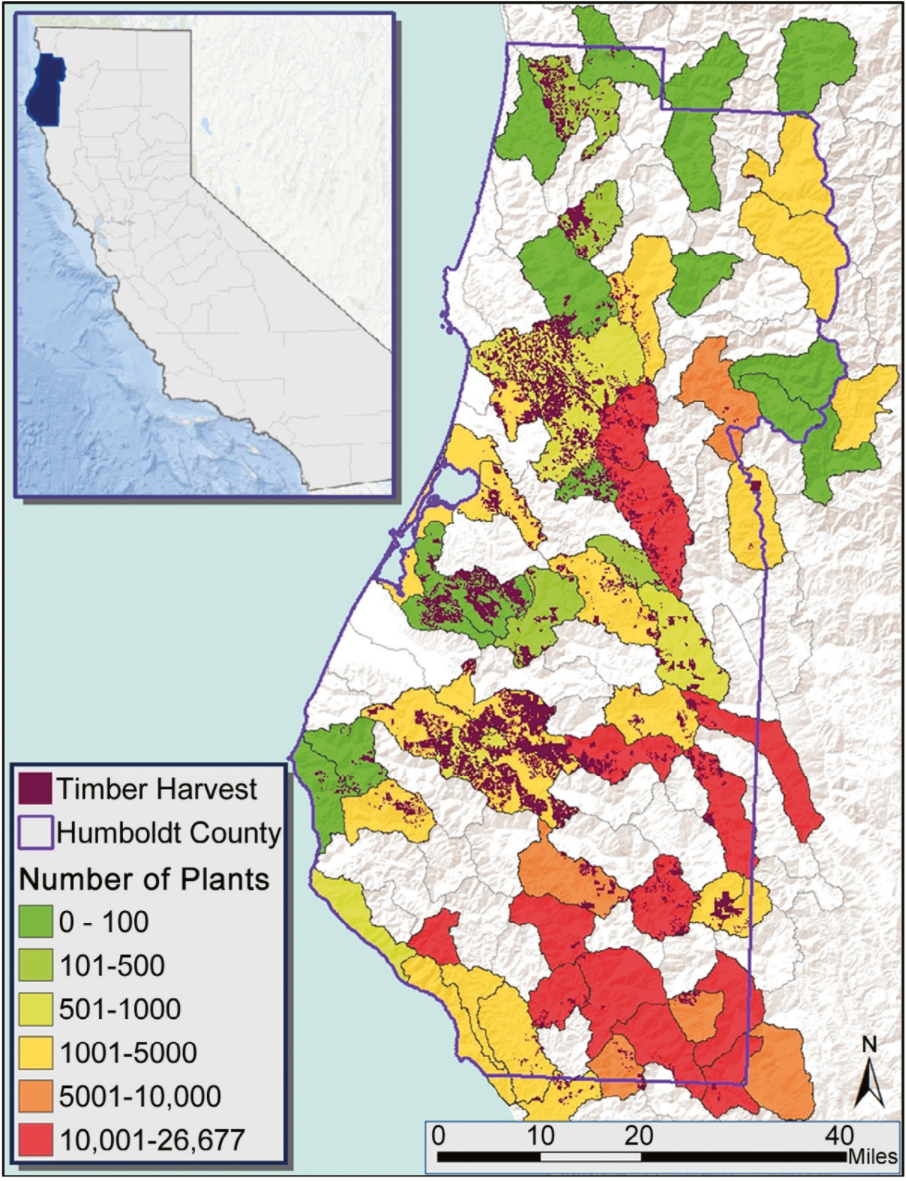Illegal Weed Can Be Worse for Forests than Logging
Credit to Author: Kaleigh Rogers| Date: Fri, 03 Nov 2017 15:00:00 +0000
From guzzling water to pesticide pollution, it’s been long established that growing weed—legally or not—isn’t great for the environment. But a recent study published in the journal Frontiers in Ecology and the Environment shows that, at least by some measures, it can be even worse for the environment than logging.
By comparing GIS data in northern California from 2000 to 2013, researchers found that while logging has a greater impact overall, weed can be even more destructive on a per-unit-area basis. That’s because illegal cannabis grow ops are typically buried deep in the woods, are irregular in size and shape, and are scattered around randomly. Compared to logging, which typically occurs in large, clear-cut swaths at the edge of the forest, this can have a serious impact on what should be the most protected part of the forest: its core.
The interior core of the forest makes a habitat for many species of plants and animals. Because it’s surrounded by woods on all sides, this part of the forest is sheltered from heavy winds, solar radiation, and evaporation. It’s cooler, shadier, and more humid—an ideal spot for woodland creatures to live and hide. But when growers are looking for a covert spot, the edge of the forest won’t do, and that’s when the damage starts to get more dramatic than logging.
“Cannabis [grow ops] basically end up punching a lot of small holes in the middle of the forest, whereas timber harvest takes out big chunks of forest but typically around the edges,” said Ian Wang, lead author of the study and an assistant professor of environmental science, policy, and management at the University of California, Berkeley. “So the cannabis grows end up leaving the forest looking like Swiss cheese, and this is likely harmful for those species that rely on large areas of core forest.”

Wang told me these forests, situated in the infamous Emerald Triangle—for decades it has been the largest cannabis-producing region in the country—are home to multiple endangered or protected species, including northern spotted owls, coho salmon, and Humboldt martens. But because the data only included up to 2013, we don’t yet know how legalizing recreational marijuana in the state—which is scheduled to begin on January 1, 2018—may impact these types of clandestine grow ops. The hope is that legalizing weed would root out the need for illicit crops and allow commercial, regulated producers to flourish, but that wasn’t the case after California voted to legalize medical marijuana in the 90s.
Wang and his colleagues are in the process of studying more recent data now to see if things have changed, and he told me if growers are able to stop pock-marking these inner-core forests, it will have a positive impact.
“But if cannabis production continues to grow under the current system,” he added, “then we can expect these effects to get worse and worse.”
Get six of our favorite Motherboard stories every day by signing up for our newsletter .